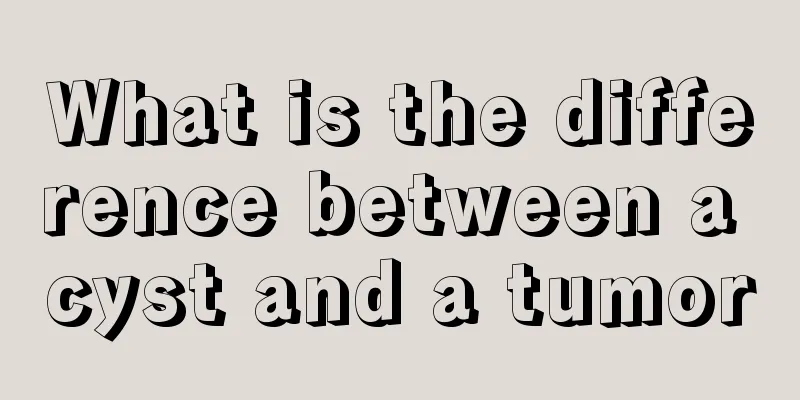What is the difference between a cyst and a tumor

|
We generally think of cysts as blisters that do not cause any direct harm. If it is not growing in a part that affects the normal function of an organ, it does not need to be removed. It is a benign lesion and small cysts may sometimes disappear on their own. Tumors are also a relatively serious substance, which are generally divided into benign and malignant. Benign tumors can be cured if well controlled, but malignant tumors are generally fatal. 1. Cysts are benign lesions, and tumors are divided into two categories: benign tumors and malignant tumors. The specific differences are as follows: ① Benign tumors: such as lipoma and leiomyoma, if they do not affect normal physiological functions, no treatment is required; ② Malignant tumors: such as lung cancer, breast cancer, liver cancer, solid tumors are mainly treated with surgery in the early stages, and those who cannot undergo surgery can adopt palliative chemotherapy or combined radiotherapy; ③ Cysts: the cause is unknown, such as liver cysts and kidney cysts, if they do not affect organ functions, generally no treatment is required. 2. Common cysts in clinical practice include kidney cysts, liver cysts, cervical cysts, ovarian cysts, chocolate cysts, etc. There are many reasons for the formation of these cysts. Some cysts are congenital, and others are caused by sequelae of inflammation. But overall, cysts are benign lesions and are not particularly serious. Some very small cysts may not even need to be taken care of, just regular checks will be enough. 3. Tumors are currently divided into two types, benign and malignant. To put it simply, benign tumors grow slower, while malignant tumors grow faster. Benign tumors do not cause much damage to the body, but if benign tumors grow in the brain, it is very serious. Malignant tumors can cause much greater damage to the body and even threaten life. 4. Generally speaking, what we call cysts are a benign disease. They can grow on the surface of the human body (such as skin cysts) or in the internal organs (such as liver cysts, kidney cysts, etc.). A cyst is a benign cystic mass that grows in a certain organ of the body, and its contents are liquid in nature. Generally speaking, common cysts include "renal cysts", "liver cysts", "simple ovarian cysts" and "chocolate cysts". Renal cysts are further divided into simple solitary renal cysts and polycystic kidneys. There are many reasons for its formation, some may be congenital, and some may be sequelae of inflammation. 5. There are two types of tumors, benign and malignant. Simply put, benign cancer means it proliferates more slowly, while malignant cancer means it proliferates more quickly. Benign cancer may not cause much harm to the human body (but if it grows in important parts such as the brain, it will be more serious), while malignant cancer causes greater harm to the human body. |
<<: What are the reasons why the refrigerator compartment is not cold?
Recommend
What are the treatments for advanced gallbladder disease
In recent years, gallbladder cancer has become on...
What organ is the appendix
The appendix is a type of tissue located in the...
What tea should I drink to detoxify acne
As we all know, everyone contains toxins in diffe...
Why is breast milk decreasing
After a baby is born, it needs its mother's m...
What are the recovery time and follow-up items after gastric cancer surgery? Do these four examinations
The recovery time after gastric cancer surgery is...
What are the early symptoms of endometrial cancer? Generally asymptomatic
There are generally no obvious symptoms in the ea...
Can formaldehyde be removed by using a fan?
Formaldehyde can be said to be an invisible kille...
What is the best way to treat bone spurs on the feet?
The most susceptible group to bone spurs is the e...
Check your back pain promptly, beware of kidney tumor
Many diseases are characterized by back pain, so ...
Who are the high-risk groups for pancreatic cancer
So, who are the people at high risk of pancreatic...
Things to note after hair transplantation, you must pay attention to everything
Hair transplant surgery is only a superficial sur...
Is tongue cancer prone to recurrence after treatment?
In real life, many people who pay attention to ma...
The severity of oral ulcers
People must pay more attention to oral health, be...
Lynch syndrome and endometrial cancer
Lynch syndrome patients have a significantly incr...
What are the ways to reduce the chance of pregnancy
In life, many couples will try all kinds of ways ...









